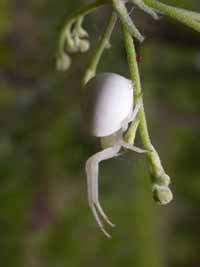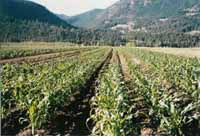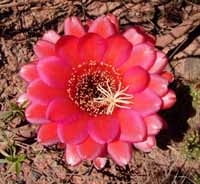About Biodiversity
What is Biodiversity?
Biodiversity, or biological diversity, is a term based on living individuals and species. The term was originally coined by Raymond F. Dasmann, a wildlife scientist and conservationist. He used the term in a book published in 1968 titled “A Different Kind of Country” (MacMillan Company, New York. ISBN 0020728107).
Biological diversity was defined by the 1992 United Nations Earth Summit in Rio de Janeiro as “the variability among living organisms from all sources, including terrestrial, marine, and other aquatic ecosystems, and the ecological complexes of which they are part: this includes diversity within species, between species and of ecosystems”. This definition was adopted by the United Nations Convention on Biological Diversity.

The Convention on Biological Diversity (Biodiversity Convention or CBD) was officially convened in December 1993. The Convention established three main goals:
- the conservation of biological diversity,
- the sustainable use of its components,
- the fair and equitable sharing of the benefits arising from the use of genetic resources.
Biodiversity of species encompasses the range of genetic variation within a species. Species in turn are elements of ecosystems comprised of other species. This can be arranged in a successively larger heirarchy as follows:
- genetic diversity
- species diversity
- ecosystem diversity
Human Benefits
The value of biodiversity to humans is more than academic. Biological diversity helps society meet basic needs of food, shelter and clothing. These benefits can be seen in agriculture, medicine, industrial materials, recreation, cultural values, intellectual pursuits and ecological services.
Agriculture
Biodiversity contributes to the reservoir of genetic traits present in agricultural crops. Most of these traits arose naturally over eons, and have only been recombined through plant breeding programs. Important crops, are often derived from only a few wild strains.
Crop diversity is a type of biological diversity that helps provide protection from disease attacks, although the diseases themselves a form of biodiversity. Pests such as insects and fungi are controlled in part by diverse ecosystem processes.
In contrast, monoculture is the lack of biodiversity. Monocultural crop production was a contributing factor to the Irish potato famine, the European wine industry collapse in the late 1800s, and the US Southern corn leaf blight epidemic of 1970.
Medicine and Industry
Many important drugs are still derived from biological sources. In many cases it is unfeasible to synthesize these chemicals. However many synthetic chemicals are themselves also derived from natural sources.
Industrial materials based on biological resources include building materials, fabrics, dyes, and even fossil fuels.
Cultural values
Biodiversity contributes to the enrichment of society through many activities including tourism, natural science studies, education, recreation, and philosophical and spiritual pursuits. Many of these human values have both an objective value as well as abstract values. For instance bird watching can be both educational as well as recreational. Some cultures consider themselves to be part of the natural world.
Ecosystem services
Ecosystem services include air quality, climate modification (for example when trees block the wind), water purification, soil protection, disease control and pollination. A biologically diverse ecosystem is more stable than a monoclone during drought.
Ecosystem services are a necessary facet of civilization. For instance, biodiversity plays a role in recycling nutrients crucial to soil fertility. A single species, Apis mellifera, the honeybee, contributes vastly to agricultural pollination. Soil microflora contains thousands of microscopic fungi that perform nutrient recycling and improve soil fertility.
For more information and interesting background on biodiversity read about it in Wikipedia.
Copyright © Pacific Biodiversity Institute





